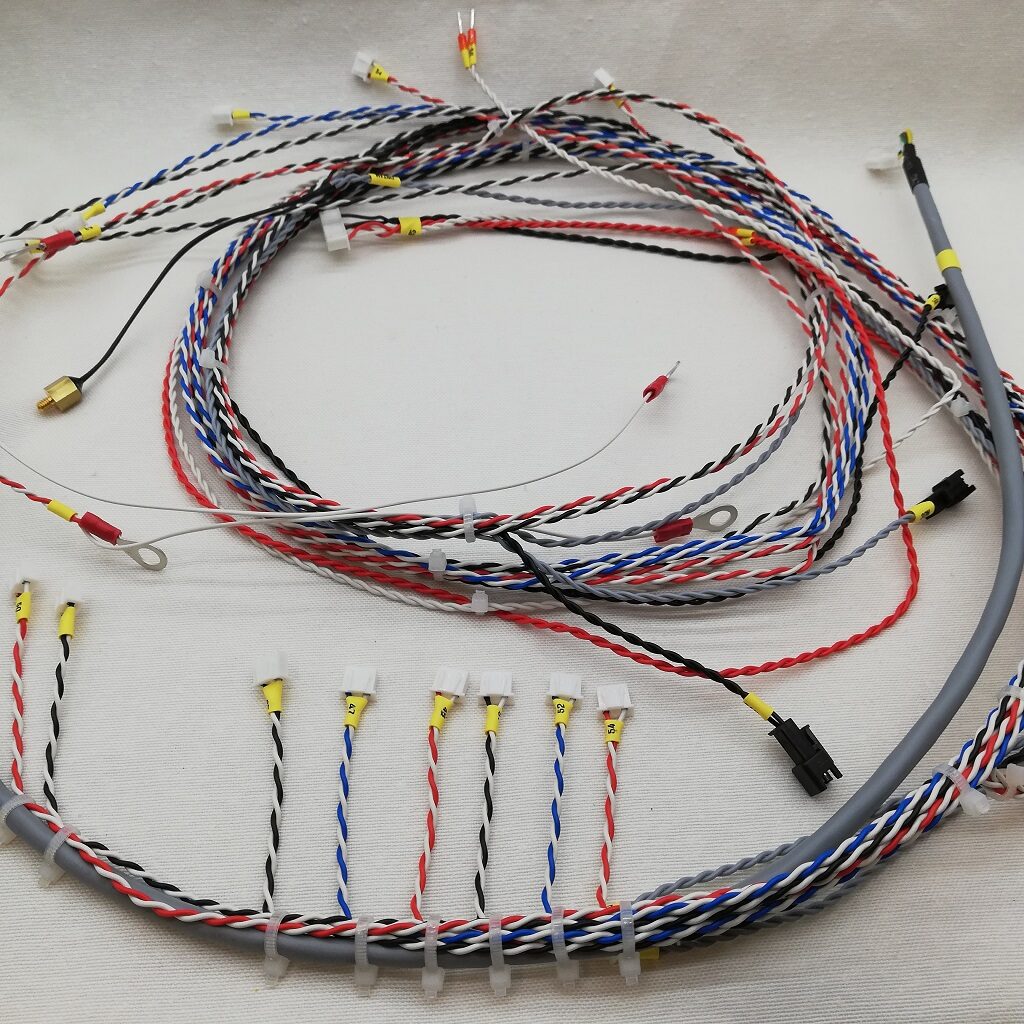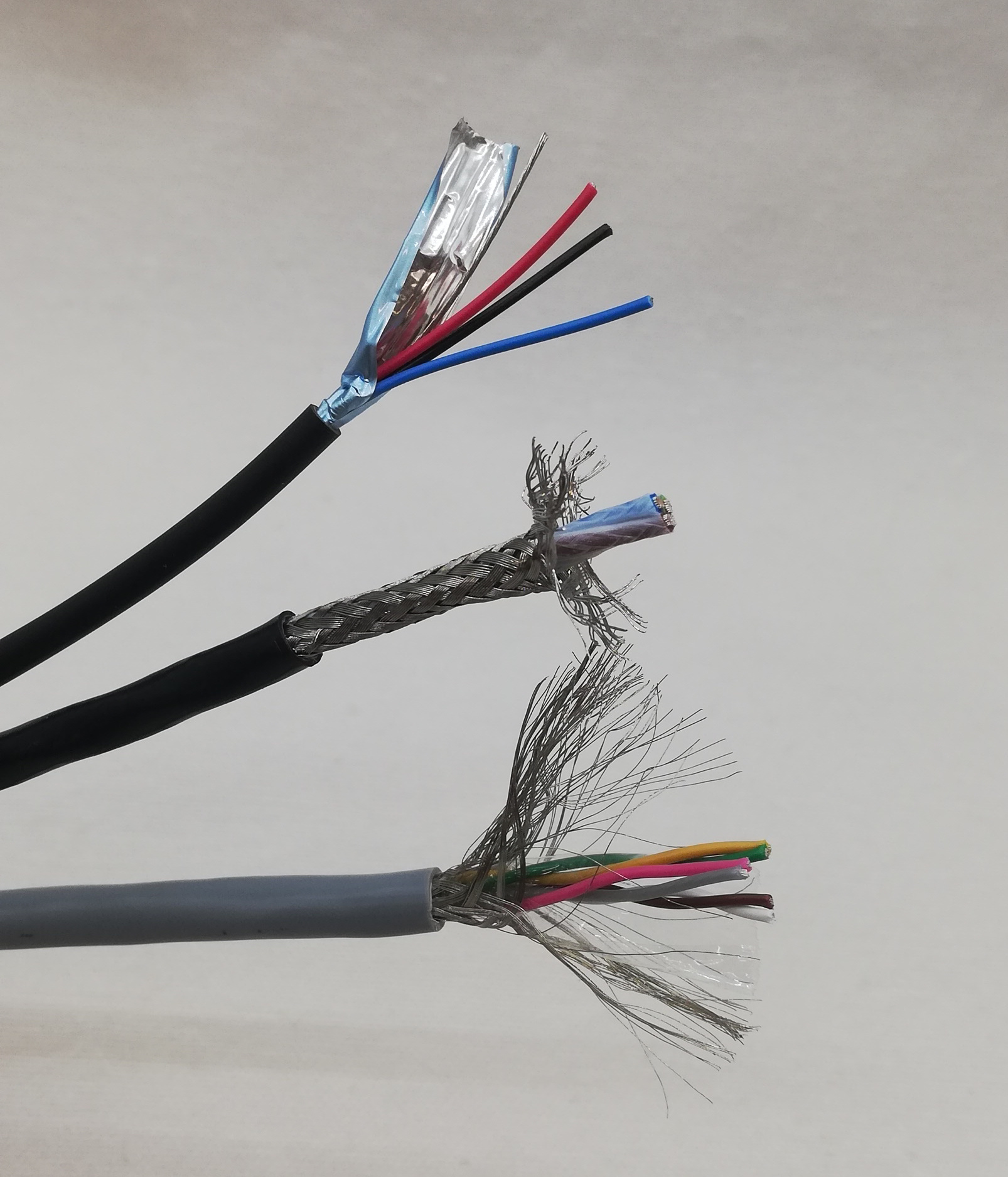Wire Harness
Wire harness or cable harness is basicly making ready-to-install a group of wires and cables with the connection elements. Also can include their subassemblies.
Cable lengths are precisely adjusted according to the application area, different colors and different types and sections can be used.
Wire harnesses are specially produced for an area which has certain dimensions mostly.
Wire harnesses are carefully designed to bring the most efficient solution to electrical signal and energy transmission.
Generally, wire harnesses used in a device so it is not necessary to use special protective materials or sheats. Wires and connectors have their own low cost protective insulation and structure which is enough for most environments.
Wire harnesses manufacturing process can go from simple to comlex. In the design process of the cable, it is ensured that it fulfills all the required features for the application, the next step is the document preparation, which is the one of the criticaly important. Then the cables are cut to length, striped and terminals crimped.Special machines are used for these processes such as fully automatic crimping machine also called crimp center. Inserting the crimped cables to housings and connectors or soldering require workmanship.


Cable assemblies
Cable assemblies are generally used for external connections of devices, one or more cables are collected in an insulation. This insulation protects the inner cables form external factors such as temperature, humidity, friction, electromagnetic fields.
Connection
There are several different connection methods for cable assemblies. Belit Elektronik offers you a wide range of products in this regard. The method of connection is determined by the type of cable and connector and the place of use. In the crimping type connection method, the cable and the connector are combined by applying mechanical force.
Crimped terminals or lugs can hold the conductors and insulation of the cable end at the same time. Applied to stranded cables.
For the right and proper connection, the terminals or cable lugs suitable for the cable must be selected first. Appropriate equipment should be used and adjusted correctly in order to perform the process in accordance with the technique. The preparation of the cables, which is the process before crimping, also affects the connection quality, the ends of the cables must be opened in the correct size and without damage.

Crimping cable lugs
Belit Elektronik uses indent crimping for 1,5-16sq mm cables, hexagonal crimp fort he 25-120sq mm cables.
Hexagonal crimp is featured a centrical and constant force applied during the crimping process and allow a larger contact area.The strands of conductors are being deformed homogeneously in hexagonal crimping.
High force required for hexagonal crimping. Belit Elektronik uses the right equipment for this process and guarantees the correct and reliable connection.
With our 13t (130kN) capacity press, we prefer a single wide hexagonal crimping type.
Soldering
Soldering is a good method for electrical and mechanical connections.
The right equipment and approved solder wire are also effective to the soldering quality and reliability. Belit Elektronik only uses approved solder wire, solder and flux.


IDC
IDC is the method of tightening the end of the cable to be connected to the terminal or connector without opening it. Tightened connector structure leads to conduction wires through cable insulation and provides contact.
The IDC method enables for fast, cheap and quick connection of flat cables and single core cables.
The use of the right equipment is important for mass production and to prevent possible faulty connections.
Shielded Cables
When Engineers talk about shielded cables, they are referring to cables including conductive layers of foil and copper braid. Such cables protect the signal integrity and to contain all electromagnetic emissions. Shield protects teh inner conductors from induction or electromagnetic radiation emitted from an external source
Electromagnetic interference (EMI) is a disturbance, sometimes called noise. The disturbance may cause a simple degradation to a total loss of data.
The shield surrounds the inner signal or power carrying conductors.
The shield can act on EMI by reflecting energy and transferring it to the grounding.
Cables can be shielded at various levels, each affecting the cost, thickness, weight and bend radius of the cable.

